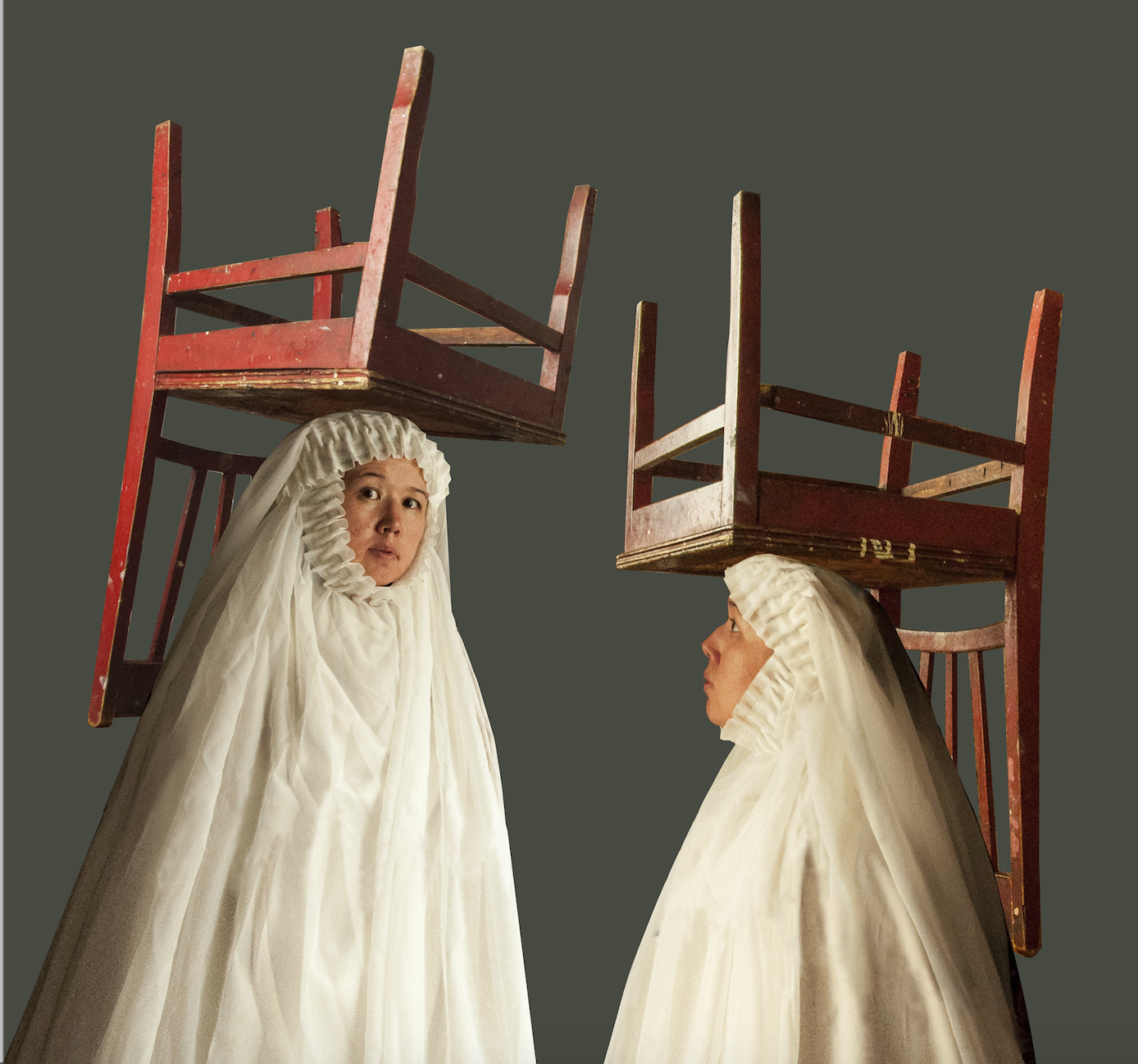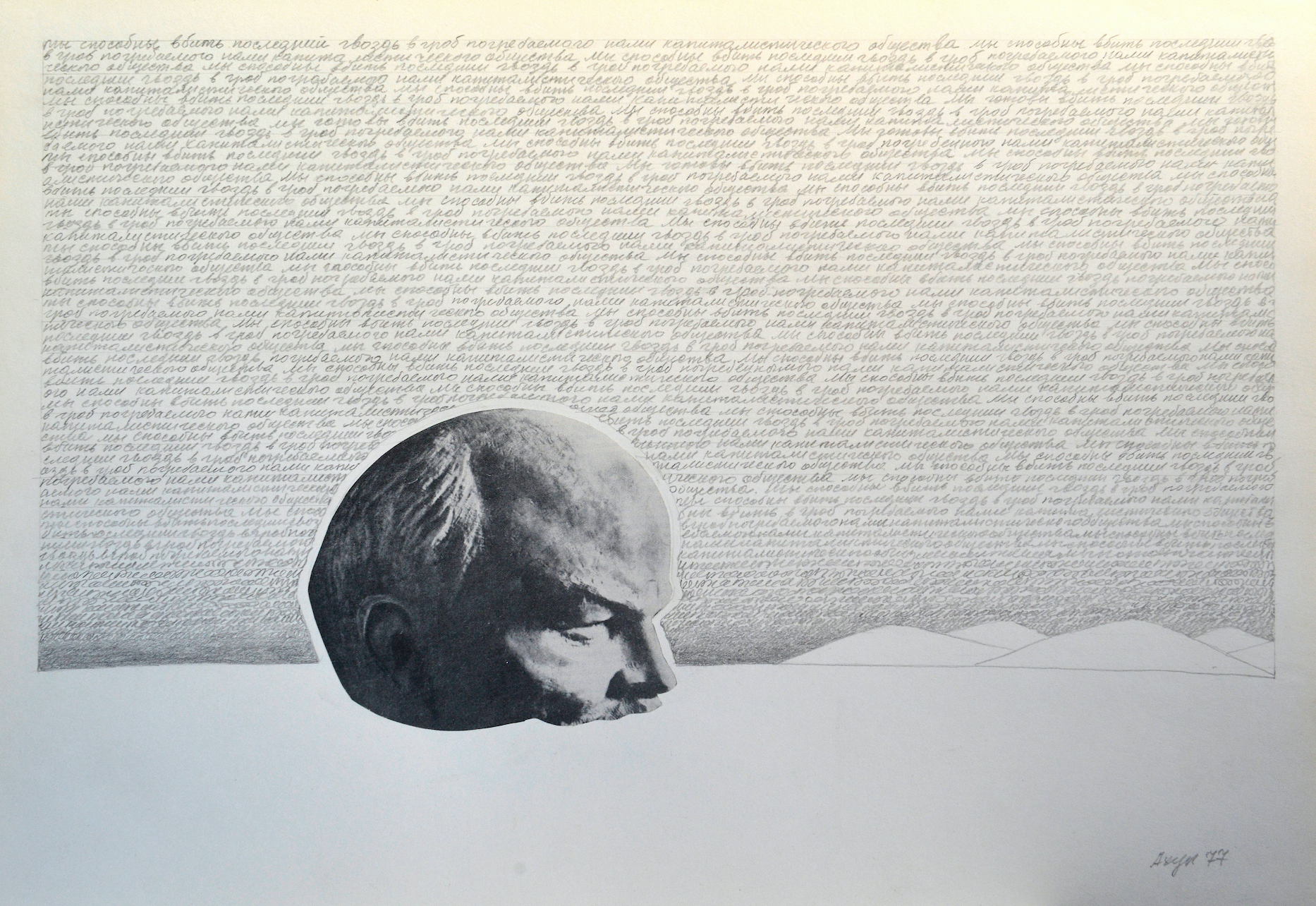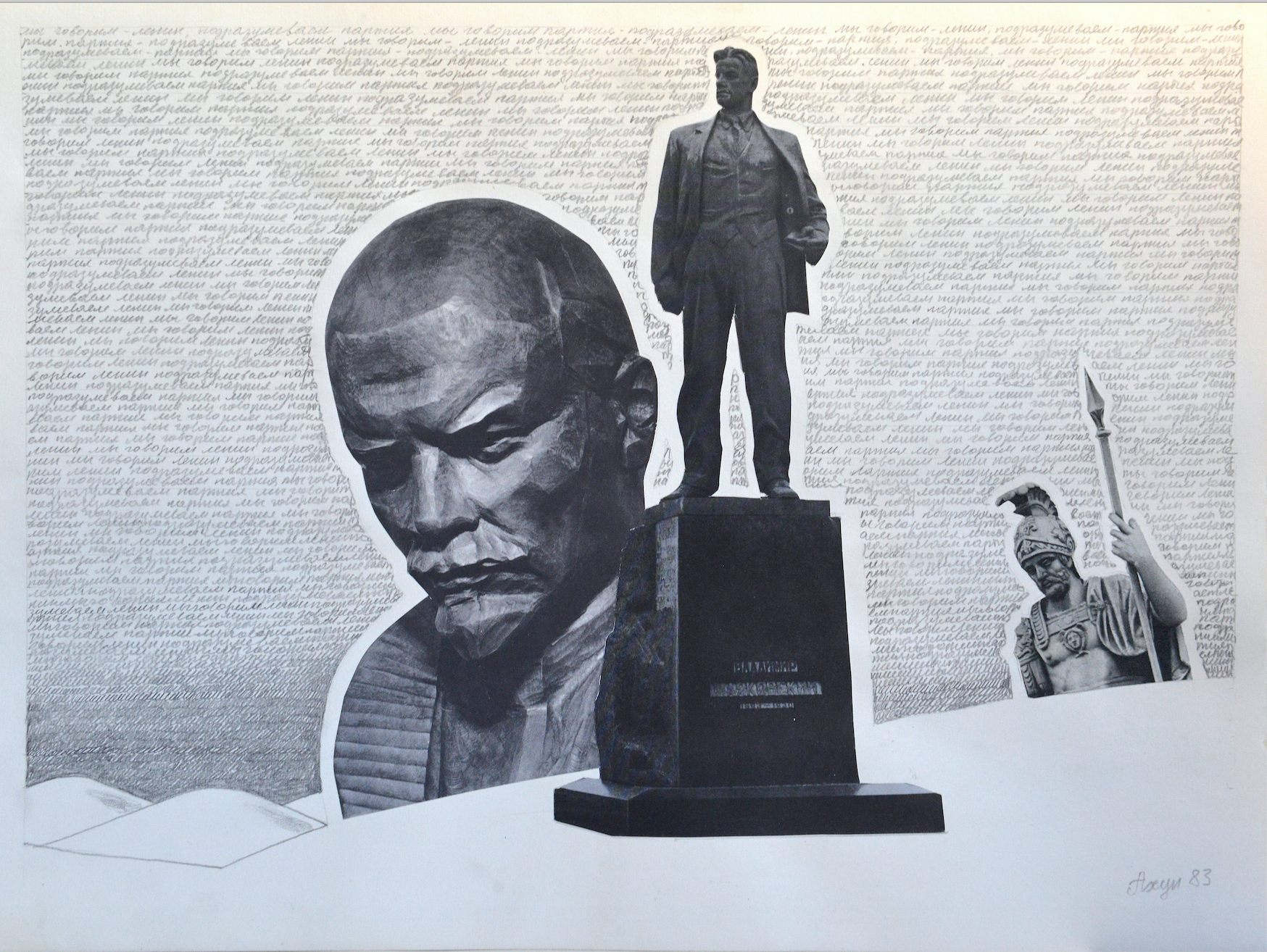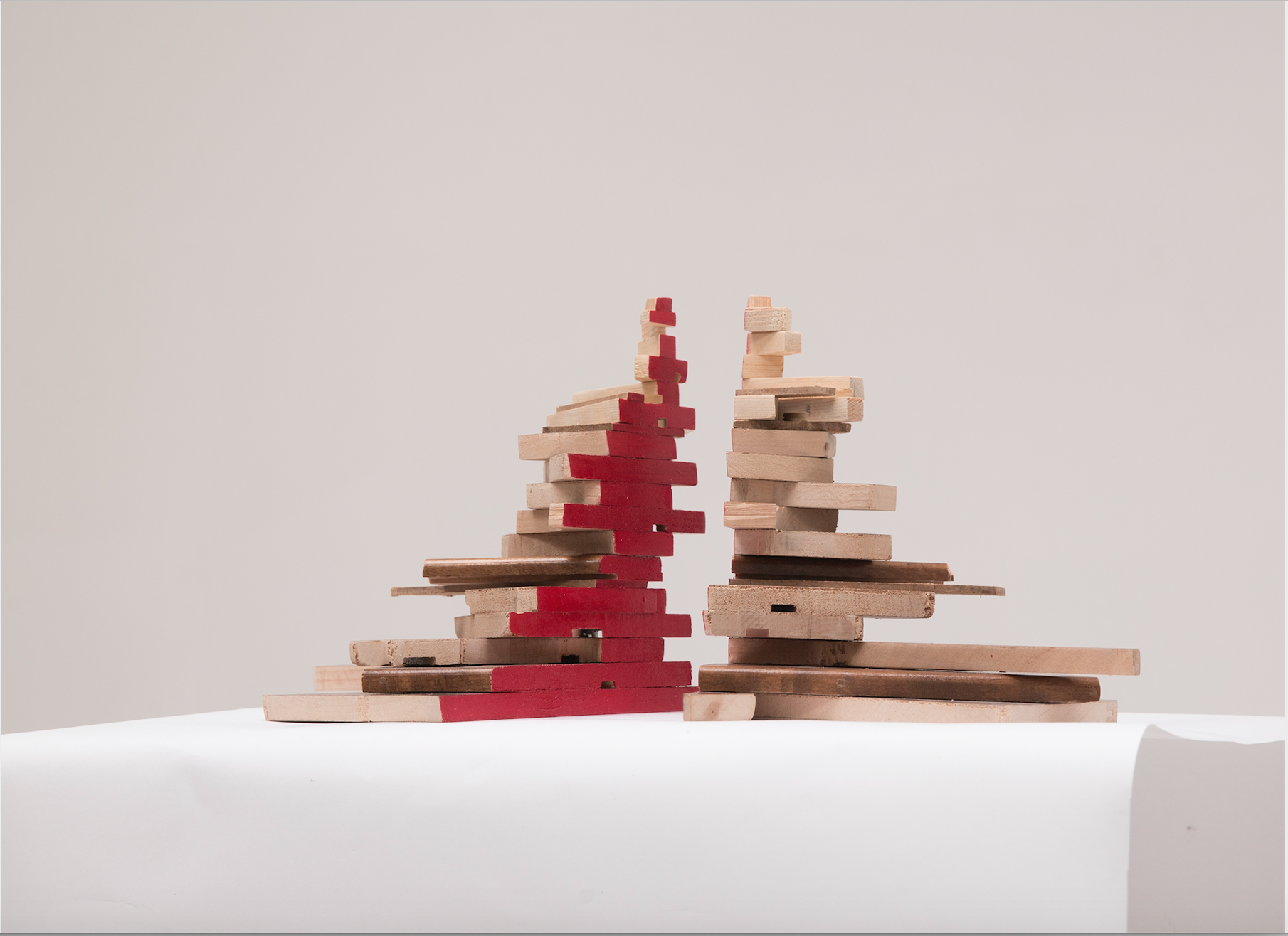Beyond Fragmentation: Contemporary Collage from Central Asia
Yelena and Viktor Vorobyev, Vyacheslav Akhunov, Alexander Ugay, Saule Dyussenbina, Bakhyt Bubikanova
January 11, 2019 - February 16, 2019
Opening reception January 11, 6-8 pm









Essay by Kris Imants Ercums, Curator of Global Contemporary and Asian Art, Spencer Museum of Art
Sapar Contemporary New York is pleased to present Beyond Fragmentation: Contemporary Collage from Central Asia, an exhibition that explores the thriving creative diversity of Inner Asia through the media of collage. Since antiquity, Central Asia has been a nexus of trade and cultural exchange, where caravans laden with precious goods crisscrossed the desert sands along the Silk Road carrying with them new religions like Buddhism and Islam. Renowned geographer Owen Lattimore (1900–1989) characterized Central Asia as the “Pivot of Asia,” for its importance in shaping and directing global history and cultural exchange. During the nineteenth century, in a conflict dubbed “The Great Game,” the British and Russian Empires jostled over this region, which spans from the Caspian Sea in the west to China in the east, for supremacy over this politically strategic territory rich in natural resources.
Today, Central Asia is a region comprised of a diverse ethnic mixture of diasporic communities and indigenous nomadic tribes, the names of which–Kazakh, Kyrgyz, Turkmen, Tajik, and Uzbek–combined with the Persian suffix “stan” or “land of” form the names of the five countries that constitute this expansive domain.The assemblage art of collage is an ideal artistic technique for encapsulating not only the cultural multiplicity of Central Asia, but also its complex history. While collage, from the French word coller “to glue,” has a long history dating back to invention of paper in China around 200 BCE, it was in the twentieth century that collage assumed its significance as a quintessential modernist artistic technique for expressing relevant, contemporary issues. The combination of various layers and images in collages forges new possibilities through its juxtaposition of disparate elements that give rise to new meanings that transcend its fragmentary origins. The mediality or "in-betweenness"of collage is an artform defined by its state of liminality. Collage is an artform that takes its meaning from its position on the thresholds and operates at the borders of sometimes-oppositional implications. Whether produced from layering clippings from newspapers or other print media, or created by manipulated multiple layers in digital platforms, collage transports the viewer from the borders of fragmentary realms into new speculative geographies of the mind that thrive with possibilities for exploration and discovery.
The collages of artist, writer and philosopher Vyacheslav Akhunov, who was born in 1948 into a Russian-Uzbek family, featurethe shattered remnants of the former Soviet Union as a way of negotiating the complex recent geo-political history of Central Asia. Akhunov’s series Mantras of the USSR(1977–1983) re-appropriates collected snippets of Soviet print culture from magazines and posters that he has amassed during his artistic career,merging iconic statues of the revolutionary founder of the Soviet Union Vladimir Lenin (1870–1924) with Greco-Roman statuary. Written across the background are repetitious slogan like “the highest goal of the Soviet State is the building of a classless society” that were invoked during the Soviet era. The incessant repetition of state propaganda that was a constant feature of public rallies, television and radio broadcasts of the Soviet period, imbued the reverberation of propaganda with a religious quality like the eponymous mantras evoked in the title of the series. The resulting images chart the collision of the cult of Lenin, the impact of Soviet modernist photomontage, and the legacy of Alexander the Great, who conquered Maracanda (present-day Samarkand in Uzbekistan) in 329 BCE that when combined with the methodic duplication of Soviet propagandist slogans evoke a temporal slippage. Rather than evoking remnants of a past emerging from the sands of time, Mantras of the USSRare speculative documents of an archaeology of the future.
Since 1900, when the intrepid Hungarian-born British scholar and explorer Sir Auriel Stein (1862–1943) first began to uncover the archaeological remains of civilizations that had once flourished in Central Asia and were subsequently consumed and obliterated by encroaching desserts, Central Asian archaeology has captured the popular imagination as a land occupied by countless layers of human civilization. Ancient cities like Samarkand thrived because of their strategic location along the legendary Silk Road, which flowed through the heart of Asia like a great landlocked highway upon which luxurious commodities and powerful ideas were transported and exchanged. During the Soviet occupation of the region, the Chorasmian Expeditions (1937–1991) led by ethno-archaeologist Sergey Tolstov, capitalized on the legacy of earlier expeditions to further demonstrate how Central Asia was a node of cultural and creative interconnectivity. In his recent book The Silk Roads: A New History of the World British historian Peter Frankopan observes: “We think of globalisation as a uniquely modern phenomenon; yet 2,000 years ago too, it was a fact of life, one that presented opportunities, created problems and prompted technological advance.” Akhunov’s collages reveal the roots of our globalized world that thrived deep in the heart of Asia.
The digital collages of Bakhyt Bubikanova, who works in Astana, the capital of landlocked Kazakhstan, grapple with the process of post-Soviet decolonization in Central Asia. Kazakhstan has an ancient history colored by a mélange of cultures, empires, and nomadic tribes, and was the last Soviet state to declare independence, just ten days before the collapse of the USSR in 1991. Since then, Kazakhstan has emerged as a vibrant, economic powerhouses accounting for 60% of the regions GDP through its oil and gas industries. In Bubikanova’s three-part collage Peri, she combines disembodied images of her head, an enlarged head of the steppe eagle surrounded by talons, a reference to the revered tradition of falconry practiced among Central Asian pastoral tribes, and a clustered wreath of babies superimposed on the naked body of the artist. The title of the triptych Peri evokes winged deities that according to Persian mythology were mischievous entities who had not yet atoned for their iniquities, and therefore were denied entry into paradise. Periunderscores the complex connections and contradictions that continue to inform Kazakhstan’s nomadic past and its current drive towards globalization and economic growth.
Saule Dyussenbina is another artist using digital media to probe the contemporary transformation of her native Kazakhstan. Her short, whimsical gif (graphic interchange format) animations interrogate shifts in the post-nomadic consciousness of Central Asia by re-appropriating works by artists who inspired, her from the Old Masters to her contemporaries. By inserting her own image, she creates droll self-portraits that explore not only the patrimony of European artistic traditions first imposed on the Central Asia by the conquering Russian Empire in the 19thcentury, but more importantly pays homage to the impact of contemporary Kazakh artists in her own creative practice. The ironically titled Pastoralbegins with a Vermeer-esque composition of a woman bathed in sunlight as she pensively stares out a window. The idyllic scene is ruptured by the grating racket of a nearby construction site, a soundscape common in developing cities all around the world today. The short video Loveis even more outlandish. A group of plainly clad, vaguely Mennonite protestant women summon a servant who enters with a package of “love” on a silver platter. The women begin to chew bubble gum, blow multicolored bubbles that pop and disappear. Dyussenbina computer animations transpose quintessential images from Northern Renaissance painting like Johannes Vermeer and Frans Hals in bizarre, absurdist situations.
The incongruity of collage underscores process and concept andis not limited to print or digital media but can also be applied to objet trouvé or“found objects.” Alexander Ugay’s More than Dreams, Less than Things. Kinetic Object(2014) reveals the complex workings of memory and the multi-ethnic history of Central Asia byrepurposing a filling cabinet, an object typically associated with order and organization, to create discordant shapes that are actually clothing patterns for Korean traditional formal attire known as hanbok. Ugay’s work investigates the diverse ethnic mixture of Central Asia, which is not limited to ethnic groups of peripatetic herders, but also encompassed diasporic communities from Russia and Asia. More than Dreams is a sculptural amalgamation that highlights the ethnic diversity of Central Asia and the heritage of the Koryo-saram or “the people of Koryo (an ancient name for Korea).” The roughly 500,000 people of Korean descent known as Koryo-saram first began to immigrate to Central Asia in the late 19thcentury. By forming patterns for male and female hanbokfrom the exterior casing of a file cabinet, Ugay underscores the in betweenness of the Korea diaspora, a community that was caught amidst the political turmoil of the twentieth century and developed strategies for survival in the peripheral territories of the Russian and Soviet Empires. Through his use of a filing cabinet to create patterns of Korean national costume, Ugay’s work operates as an archive that collates and preserves memory.
Yelena and Viktor Vorobyev’s photographic triptych One of the Ways of Leveling the Horizon attempts to measure and contain infinity. The work echoes with an observation of the desert in the Little Prince by Antoine de Saint-Exupéry (1900–1944): “One sits down on a desert sand dune, sees nothing, hears nothing. Yet through the silence something throbs, and gleams...” The work does not deploy typical techniques associated with collage and is not a digitally manipulated image, rather the work is a conceptual and performative work staged in real life. The ethnically Russian, Kazakhstani-based husband-and-wife duo disrupts the quotidian scenery of the incalculable expanse of the sky, transmuting it into something that is contained and quantifiable. One of the Ways of Leveling the Horizon is a witty critique on paradigms of power, and our desire for order and organization. By holding a taut rope along the horizon, the artists merge their physical bodies into the vastness of the steppe skyline. As with all the art inBeyond Fragmentation,they transform dreamscapes into vestiges of reality that are poignant commentaries on system of power and control endemic throughout the world today.
The intersectional art in Beyond Fragmentation: Contemporary Collage from Central Asia not only provides a telling glimpse into the complex and varied history and culture of this important global region, but also transcends the splintered, incongruency of collage to produce unexpected implications that pulsate with the vibrant transformations gripping this region at the heart of Asia.
Kris Imants Ercums
Aspan Gallery is a leading contemporary art gallery based in Almaty, Kazakhstan. The gallery's mission is to represent and support multidisciplinary work by Central Asian artists through exhibitions, publications, residencies and educational programs. In 2015 the gallery initiated a series of mid-career retrospectives of Central Asian contemporary artists, held jointly with the Kasteev Museum, Almaty. These are the first museum shows in Central Asia of artists who, although internationally acclaimed, are little known in their home countries. The first exhibition of Meldibekov's work 'Eternal Return' curated by Viktor Misiano was named by the press as the most significant cultural event in Kazakhstan for the last several years. The second exhibition of Vorobyevs' work 'The Artist Is Asleep' attracted even more critical and public attention and was reviewed in Frieze and Art Asia Pacific magazines. Subsequently Vorobyevs' eponymous installation was exhibited at the 56th Venice Biennale. It was the first time a Central Asian artist was shown in the biennale's main project.
Kris Imants Ercums received his PhD from the University of Chicago, and has been Curator of Global Contemporary and Asian Art at the Spencer Museum of Art, University of Kansas since 2007. Recently he completed a researcher residency at the Korean National Museum of Modern and Contemporary Art.
About Artists
Vyacheslav Akhunov is an artist, writer and philosopher. His practice comprises collage, painting, installation, performance and moving image, as well as numerous essays and novels. Since 2000 Akhunov has been investigating the possibilities of new media, especially video. From the peripheral position of an artist who lives in Tashkent, his artistic production is connected to the experience of 1970s Moscow Conceptualism. He uses the typical iconography of the Socialist propaganda of the Soviet period, subverting the then dominant ideology through the manipulation of propagandistic images. His work tackles the ironies of perceived cultural marginality as well as the power of difference. Notable recent exhibitions include 2nd Yinchuan Biennale (2018), Quand Fondra la Neige où Ira le Blanc at the Palazzo Fortuny in Venice (2016), BALAGAN!!! in Berlin (2015), 5th Moscow Biennale (2013), Central Asia Pavilion at the Venice Biennale (2013, 2007, 2005), 1st Kyiv Biennale (2012), Documenta (13), Kassel (2011), Ostalgia at the New Museum in New York (2011), Time of the Storytellers at KIASMA in Helsinki (2007), La Biennale de Montréal (2007) and 1st Singapore Biennale (2006).
Alexander Ugay deals with the issues of memory and nostalgia, exploring the complex interaction of the historical past, current reality and the future. Many of Ugay’s projects investigate the relationships between collective and personal memory, collective and personal space, focusing on the concept of time and its flows. Notable recent exhibitions include Eurasian Utopia: Post Scriptum at the Suwon I’Park Museum of Art in Suwon (2018), Phantom Stories: Leitmotifs of Post-Soviet Asia at the Lunds konsthall in Lund (2018), More than an Image, Less than an Object at Galeria Labirynt in Lublin (2017), Festivities Are Cancelled! at the Kyiv Biennale (2017), 6thMoscow Biennale (2015), Busan Biennale (2014), Promises of the Past at the Centre Pompidou in Paris (2010), Younger Than Jesus at the New Museum in New York (2009) and 9thIstanbul Biennale (2005).
Bakhyt Bubikanova works in a variety of techniques — painting, collage, installation, performance, photography and video art. Today she is one of the most prominent figures among the younger generation of Kazakhstani artists. In her work the artist primarily reflects on the paradoxical elements of everyday life of the local population. Bubikanova skillfully combines the local and global meanings, creating an artistic slice of reality of the Central Asian region. Notable recent exhibitions include Eurasian Utopia: Post Scriptum at the Suwon I’Park Museum of Art in Suwon (2018), Suns and Neons above Kazakhstan at the Yarat in Baku (2017), La vie est une légende e.cité – Almaty/Kazakhstan at the Museé d’Art Moderne et Contemporain in Strasbourg (2014), the 4th International Biennale for Young Art in Moscow (2014) and Face of the Bride at the PERMM Museum of Contemporary Art in Perm (2012).
Saule Dyussenbina’s The practice of Saule Dyussenbina is interesting not only by the presentation of each project by itself, but also by its organic dynamic that crosses several border states. The artist is using traditional mediums of drawing and painting, by studying the objective world around, her home, her body, her history and memory. These studies gradually lead her to the creation of assemblages, including not only painted and written images, but also objects, photo materials, fabrics, natural objects, digital collages and GIF animations, that can circulate online endlessly. Notable recent exhibitions include Post-Nomadic Mind at the Wapping Project in London (2018) and the Postcolonial Art of Central Asia at the Gedok Gallery in Karlsruhe (2018).
Yelena and Viktor Vorobyev have been working together since 1990s. Their usage of different genres and techniques results in multi-layered, often ironic, works focussing on Post-Soviet realities of constant change, disorientation and their effects on everyday life.The artists have been compiling a precise record of the ephemeral and quotidian details of daily life, local particulars, subjects that have been often overlooked and are not exactly photogenic. While seemingly insignificant, these details (of objects, colors and customs) are integral to the creation of the new symbols of power and serve as poignant social metaphors. The pair engages deeply with the environment they live in, examining its socio-cultural underlining, using a light and humorous approach. In 2015 Vorobyevs' mid-career retrospective The Artist Is Asleep curated by Viktor Misiano took place at the A. Kasteev Museum of Arts, Almaty. Notable recent group shows include Viva Arte Viva, 57th Venice Biennale (2017), 8th Asia-Pacific Triennale in Brisbane (2015), BALAGAN!!! in Berlin (2015), The Beast and the Sovereign at MACBA in Barcelona and Württembergischer Kunstverein in Stuttgart (2015), 1st Kyiv Biennale (2012), 14th Sculpture Biennale of Carrara (2010) and Central Asia Pavilion at the Venice Biennale (2009, 2007, 2005).

